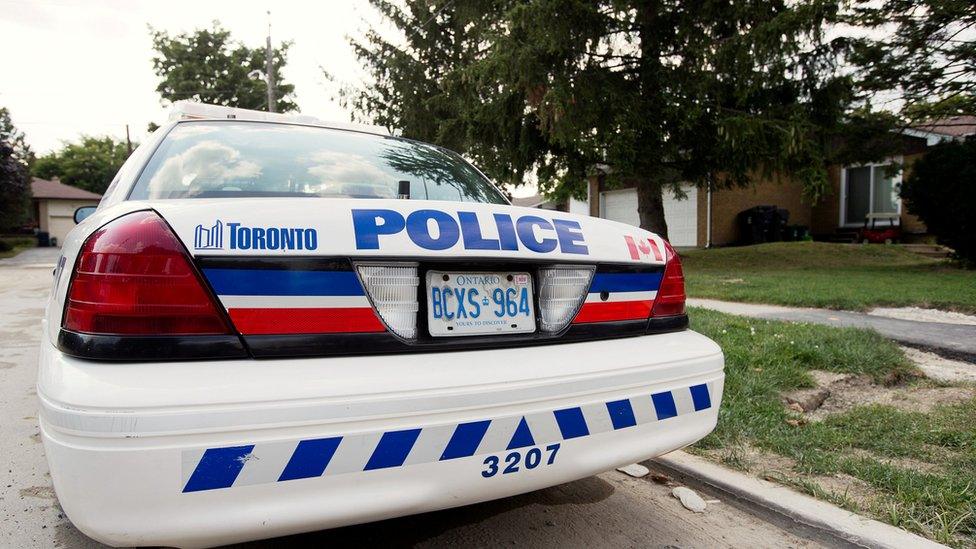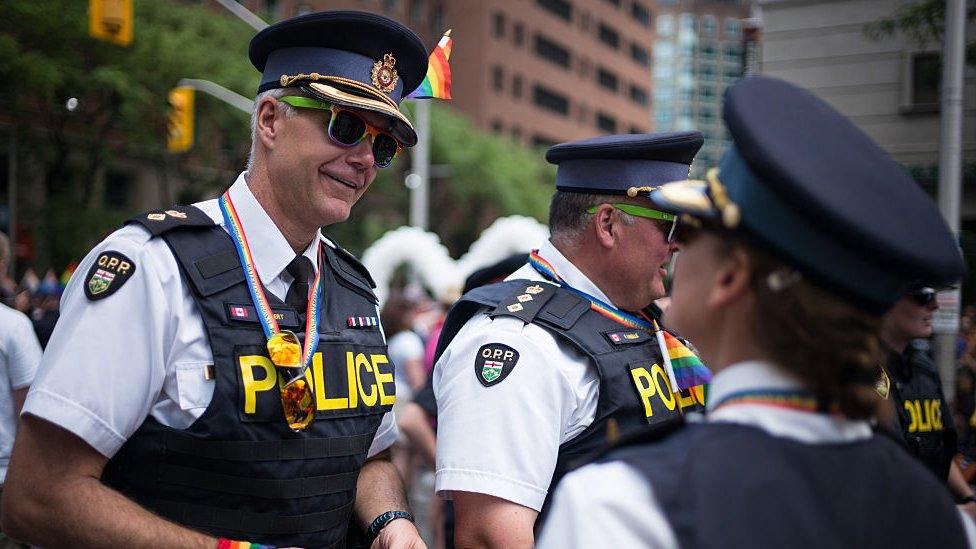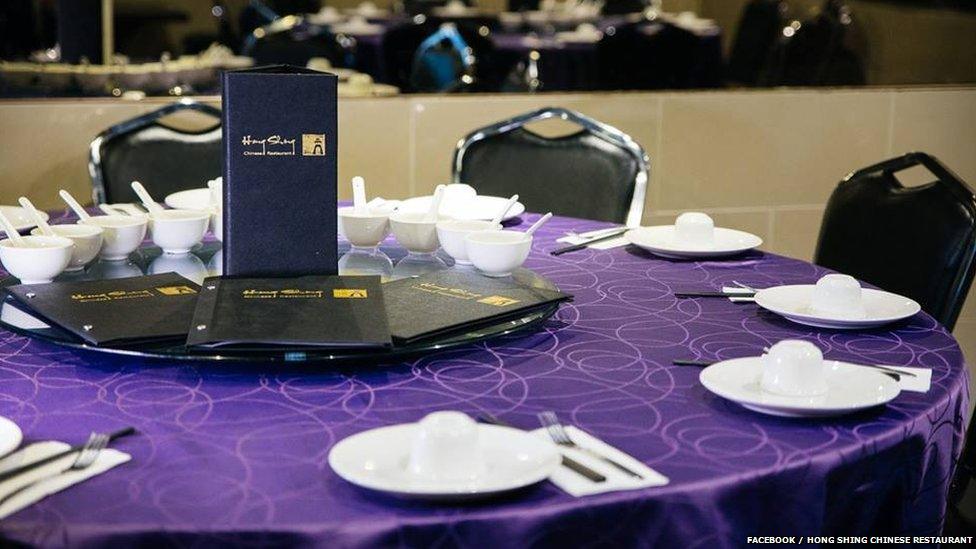Report reveals 'gross' racial disparity in Toronto policing
- Published

Black people are "grossly over-represented" in violent police interactions in the Canadian city of Toronto, a human rights investigation has found.
The Ontario Human Rights Commission launched the probe into the Toronto police department last year.
The interim report, released Monday, found a black person is 20 times more likely than a white person to be shot and killed by police.
About 8% of Toronto, Canada's most populous city, is black.
"I don't think we can ignore this disparity," said Scot Wortley, a criminologist at the University of Toronto, who conducted the research.
Unlike in the US, Toronto police do not keep race-based data, which can make studying racial profiling challenging.
To examine racial bias, Dr Wortley reviewed 244 Special Investigations Unit (SIU) investigations, launched between 2013-17.
He used police notes, case photographs, media reports and occasionally social media to identify the race of those involved in the incidents.
The SIU is responsible for investigating complaints against Toronto police officers, and these incidents represent the most serious cases involving a police officer and a civilian.
About a quarter of all SIU investigations involved a black civilian.
The more serious the incident, the larger the disparity between black and white complainants, Dr Wortley found.
About 70% of SIU investigations into police shootings that resulted in a civilian's death involved a black civilian.
Regardless of race, two-thirds of civilians involved in SIU investigations were unarmed at the time of their encounter with police.
Black people were more likely to have allegedly resisted arrest than white people (41.7% v 25.5%).
But white people involved in police incidents investigated by the SIU were more likely to have a criminal record (54.5% v 44.4%) and to have allegedly threatened or attacked police (61.8% v 44.4%) than black people.
The human rights commission called these findings "disturbing" and called on police to begin tracking race-based data and making the data public so that racial profiling can be more consistently monitored.
"Whatever we can do as an agency to improve on that relationship with the black community, I want that to happen," Toronto police chief Mark Saunders told CBC., external
Black community leaders also spoke out about the report, applauding its efforts to document and quantify police violence against the black community but noting that its findings are not surprising.
"This report is not news to the black community," said Valerie Steele, a community activist.
"We in the black community live this abuse and brutality on a daily basis."
- Published30 November 2017

- Published24 February 2017

- Published30 April 2018
